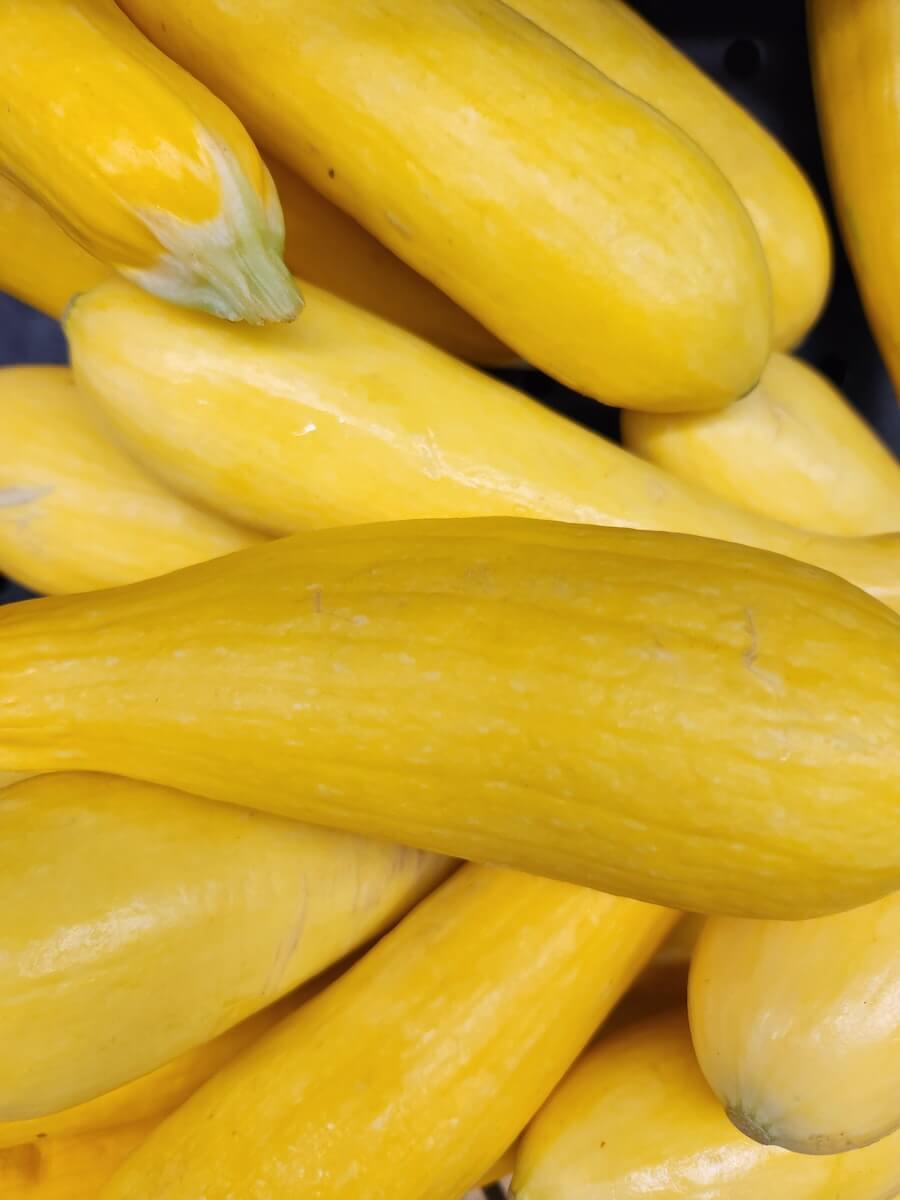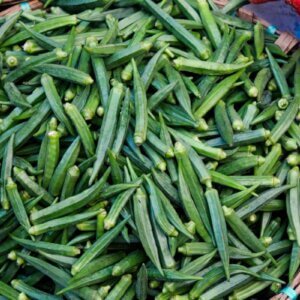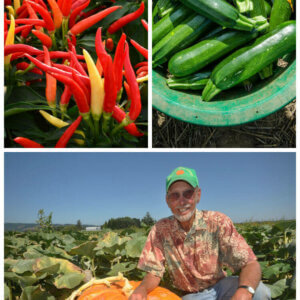Summer squash is an excellent garden vegetable that can produce large harvests in small spaces and a short period of time. One zucchini or crookneck plant can provide an abundance of deliciousness — sometimes more than we can handle.

When you and the family have eaten your fill of squash, the kitchen counter is full, and friends don’t want any more, then what? Summer squash is incredibly easy to preserve, and there are several ways it can be done. Let’s get down to business.
What Is Summer Squash?
Before we talk about preserving this delicious vegetable, let’s go over the differences between summer and winter squash.
One primary difference between summer and winter squash is texture. Summer varieties are characterized as soft-skinned, which makes them more tender and moist. Summer squash also has a higher water content and a shorter shelf life than winter varieties. In contrast, winter squash is hard-shelled with thicker skin, which makes it ideal for storing throughout the cold months with little to no preservation techniques aside from proper storage. Another difference between the two squashes is that winter squash seeds are generally larger and thicker, making them more difficult to eat unless they’re roasted like pumpkin seeds.

Both summer and winter squash are from the same genus (Cucurbita). They both ripen on the vine, but there are a couple of differences. For instance, winter squash vines in a specific direction, which allows us to grow it away from other plants, maximizing our growing space. In contrast, summer squash tends to grow in bushes, taking up a bit more room in the garden.
Summer squash can be harvested throughout the entire summer, while winter squash gets harvested from late summer into autumn and in some areas, early winter. Summer squash is generally harvested after 50 to 65 days of growing, while winter varieties take anywhere from 60 to 110 days of growth before harvest.
Lastly, winter squash isn’t as tasty when harvested too early. Its best flavor is available when it has fully matured. Summer squash is considered to have the best taste when harvested young.
Squash Varieties
Some varieties of summer squash:
- Straightneck
- Crookneck
- Pattypan
- Zucchini: Black Beauty, Baby, Golden, Green, Round, Grey, Yellow
Some varieties of winter squash:
- Butternut
- Honeynut
- Acorn
- Carnival or Dumpling
- Kabocha – and similar varieties
- Delicata
- Spaghetti
Of course, there are many more varieties of squash, but the ones I listed are among the most common.
How to Preserve Summer Squash
I must warn you that summer squash can get a bit mushy when preserved, but it’s not bad. It will still contain all of the vital nutrients and fantastic flavors, but it tends to fall apart a little when cooking it.

Freezing Summer Squash
Freezing is one of the simplest ways to preserve food, and it seems to retain more of the squashy flavors we love. Many vegetables are often blanched before they’re frozen.
The key to keeping summer squash from getting mushy is to blanch it lightly. Freezing it raw causes the texture to change once it’s thawed. Simply cut the squash into cubes or slices, and toss them into boiling water for one minute.
I skip the blanching process when I want to freeze grated squash for bread and soups. I just grate it and put it in a freezer bag. The frozen squash will contain quite a bit of water, but I drain it or use some of it in place of whatever other liquid I’d typically use for a recipe (like zucchini bread).
Frozen squash is best used within a year from the freezing date. Make sure you get all the air out of the bag or container to keep it from getting freezer burn.
Pressure Canning Summer Squash
Again, before you can your summer squash, you’ll want to blanch it to prevent the growth of bacteria that causes botulism. Blanching or a boiling water bath kills off most of the microorganisms that cause foodborne illnesses.
For the best results, you’ll want to choose the freshest squash, free of blemishes, bruises, soft spots, or cuts. A valuable lesson about canning is to make sure there aren’t any air bubbles present. After you’ve filled your jars with the squash, remove air bubbles by tapping the jars on the side of a counter or tapping a wooden spoon down the sides of the jars to eliminate the bubbles. You’ll want to do this before you place the jars into the pressure canner.
I love preserving squash using the pressure canning method because it can sit in your pantry for 3 to 5 years. It will usually remain safe to use long after that, but the quality and flavor aren’t as good.
Water Bath Canning Summer Squash
Using the water bath canning preservations is only meant to be done with high-acid foods. While squash is a low-acid food, there is something we can do so we can use this method. I know some people are nervous about using a pressure canner because of the high temperatures and the pressure that could blow, wreaking havoc if one isn’t careful.
That said, if you prefer to use the water bath method, you must add a little acid and parboil your squash. You can combine a cup of vinegar with 4 cups of water and a couple tablespoons of lemon juice to create a perfectly balanced acid. Put the mixture into a spray bottle, lay the whole intact squash out on a surface, and spray them with the solution. You’ll want to let them sit for a couple of minutes before rinsing and moving on to the next step.
Parboil the squash for about five minutes before you begin canning.
Dehydrating Summer Squash
Summer squash is among the easiest veggies to dry using a dehydrator. Dehydrated summer squash holds flavor and remains fresh for cooking all year. It might not sound appealing, but to use your summer squash all year long, you have to rehydrate it and add it to soups, stews, and other delicious dishes.
Slice your squash and place them in the dehydrator. You’ll want to set the temperature between 140- and 145-degrees Fahrenheit for about 8 to 10 hours or until the slices are crisp and brittle. Store the dehydrated squash in airtight glass jars. You can place them into plastic bags before putting them in a jar. It’s not necessary for the jars to be airtight.
Dehydrated summer squash can last up to a year when stored in a cool, dry place.
Pickling or Fermenting Squash
Pickling squash is as easy as making pickles. It’s an easy, healthy way of preserving fresh vegetables. There are many recipes one could find to use. Honestly, a recipe for cucumber pickles will work equally as well. You can enjoy pickled summer squash as you would pickles, alongside a sandwich or as a snack.
Pickled squash should be canned in a water bath canner to extend its shelf life. Stored in a cool, dry pantry, they will last about a year. If you’re not interested in canning them, you can make refrigerator-pickle squash, but it won’t last long. That’s more of a method for keeping the squash for a week or so.
Freeze-Drying
There is a final preservation method you could use to preserve summer squash. The freeze-drying process works well, but I have yet to meet anyone who has the equipment to do it. It’s the most expensive route to take, but if you prefer freeze-dried food, then it might be worth the investment. I’m not going to lie. Getting your hands on one can cost thousands of dollars. I’d rather can, freeze, or dehydrate my produce.
Preserving our garden bounty is an excellent way to keep food stocked for later days. It’s always sad when the growing season is over because many items (like tomatoes) are best when they’re fresh. However, we can enjoy the harvest all year long if we preserve it. As you can see, there are several ways to preserve summer squash. Choose your favorite or try them all.









































I noted your suggestion regarding water bath canning squash and pretreating the vegetables with an acid solution. But you didn’t finish the recipe! How do you cut the squash- 1/2 inch slices? Cubes? What solution do you use in the jars? Salt? Vinegar solution? What size jars? How long are they processed?